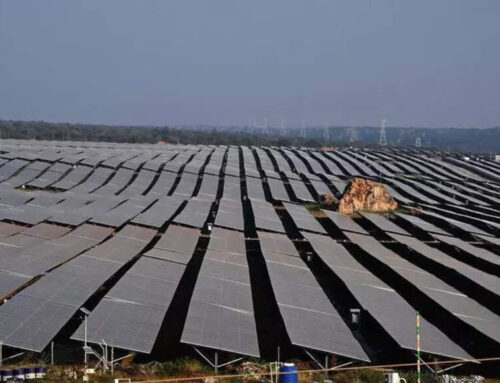Amazon Unveils AI-Using Warehouse Robot With Human-Like Sense of Touch
May 7, 2025
Amazon’s new Vulcan fulfillment center robot doesn’t look humanoid but it has some very human characteristics, like the ability to “feel” the items it’s handling.
Amazon introduced Vulcan at its Delivering the Future event in Germany on May 7.
“Built on key advances in robotics, engineering, and physical AI, Vulcan is our first robot with a sense of touch,” the company said in a statement. The event is a showcase for Amazon’s technology innovations.
Vulcan can stow or pick items from the fabric-covered pods Amazon uses for inventory storage. It has a human–like finesse when handling objects. Force feedback sensors help the robot avoid damaging the merchandise.
Enlarge Image
A suction cup and camera system come into play when Vulcan is pulling items out of bins.
“While the suction cup grabs it, the camera watches to make sure it took the right thing and only the right thing, avoiding what our engineers call the risk of ‘co-extracting non-target items,'” Amazon said.
Vulcan is in place at fulfillment centers in Spokane, Washington, and Hamburg, Germany. It’s primarily tasked with reaching items stored low that require a human to bend down or items stored up high that require an employee to use a stepladder.
The rise of robots in traditionally human-powered workplaces can be a sensitive subject. Amazon makes it clear it sees Vulcan as an assistant to its employees rather than a replacement for them.
Vulcan can handle 75% of the types of items stocked at the fulfillment centers. It’s designed to know which ones it can move and which ones it needs to seek human help — like a robot-human tag team.
Enlarge Image
The robot uses a physical AI system that includes “algorithms for identifying which items Vulcan can or can’t handle, finding space within bins, identifying tubes of toothpaste and boxes of paper clips and much more.” The AI was trained on everything from socks to electronics and continues to learn as the robot works.
Humans and robots can effectively coexist in distribution centers, said logistics and operations researchers Rene de Koster of Erasmus University in the Netherlands and Debjit Roy of the Indian Institute of Management Ahmedabad.
“Right now, at least, distribution center automation with people in the mix is often a more efficient, flexible and cost-effective bet than a completely automated center,” the team said last year in a summary of their research for the Harvard Business Review.
Robots have long been part of Amazon’s operations with more than 750,000 robots deployed in its fulfillment centers, the company said.
Vulcan will roll out to more centers in Europe and the US over the next couple of years, increasing the chances of your future Amazon shipments having Vulcan’s unseen “fingerprints” on them.
Search
RECENT PRESS RELEASES
Related Post




